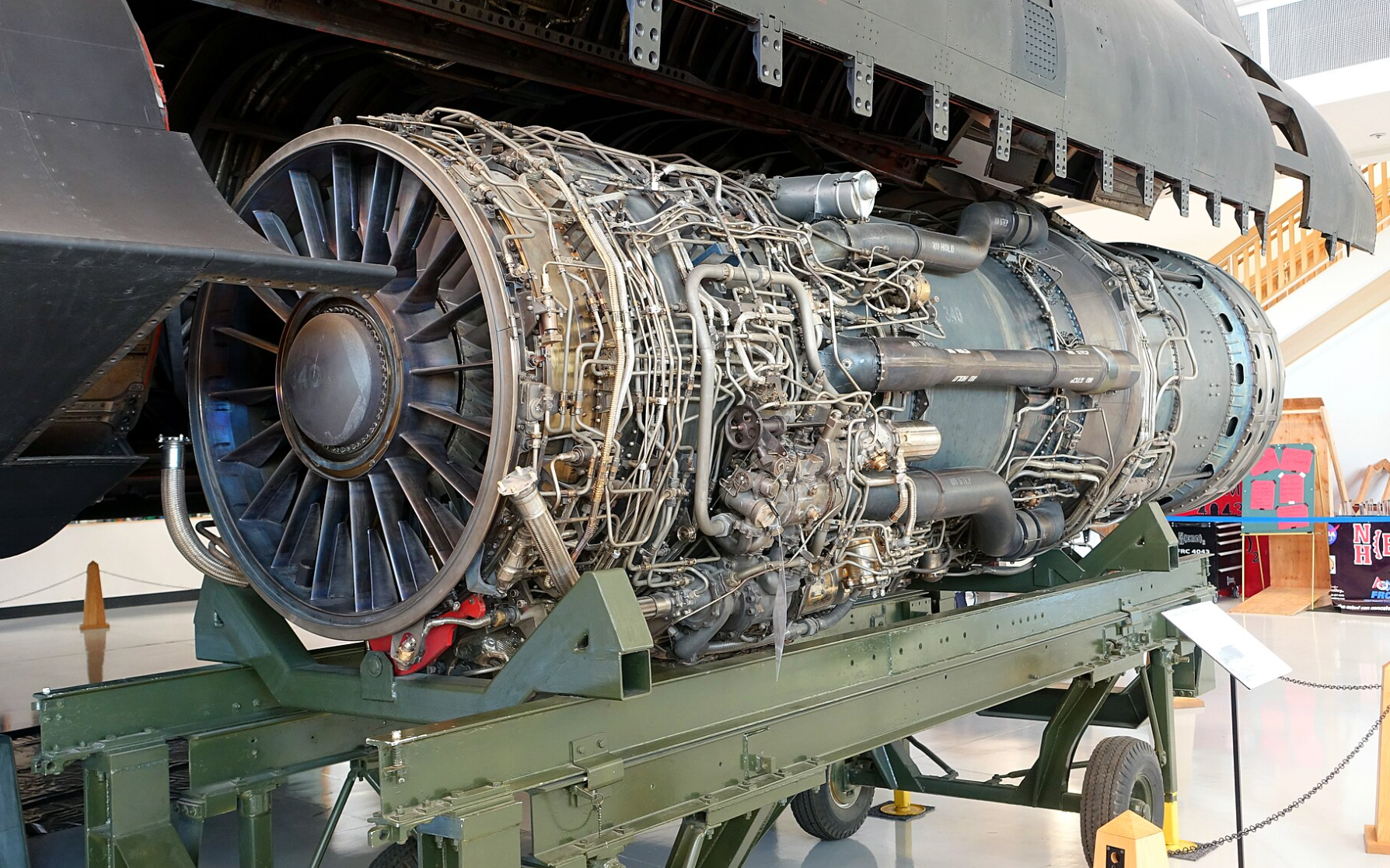Exploring Espionage: The Lockheed SR-71 Blackbird
Height was might thanks to the U-2, but the SR-71 had true speed.
Sometimes, things become cultural icons without that ever being the intent. And while in today’s world, spy satellites have made the concept of a reconnaissance platform somewhat outdated, there was a time when this wasn’t always the case. In the aftermath of WW2 and before the space race would bring satellites to the forefront, there was a time when dedicated reconnaissance platforms would be king. First, there would be the U-2, which would use its extreme altitude for protection. After the loss of a U-2 platform in the 60s, though, it was realised that the U-2 would be on borrowed time.
So, a new platform was the order of the day. Combining blistering performance with the first hints of low observable or stealth technology, the SR-71A would launch into a world where it would have little equal. Because of this, it would redefine the concept of both speed and reconnaissance capabilities, placing itself firmly in the history books. It all started with the A-12, which was launched as a CIA black project. Source: Wikipedia
It all started with the A-12, which was launched as a CIA black project. Source: Wikipedia
The Oxcart
Like a lot of high-performance platforms at the time, the SR-71 would be launched as a black project. And, at the start, it wasn’t called SR-71 at all. It would be known as the Oxcart. Originally, the name of the program, Oxcart, would eventually be adopted for the aircraft as well.
It’s worth having some additional context here to help understand how the projects came to life. At the time, aviation technology was shifting rapidly, and as such, it wasn’t uncommon for aircraft to have a short service life before being replaced by something more modern. A great example of this is Convair’s B-58 Hustler. A supersonic heavy bomber sounds like something to aspire to, but the reality was that once in service, the project suffered from flaws that could not be easily rectified. Because of this, the Hustler would last just ten years in service before its retirement. The Hustler was a great example of cutting edge tech that would go obsolete in less than a decade. Source: Wikipedia.
The Hustler was a great example of cutting edge tech that would go obsolete in less than a decade. Source: Wikipedia.
While the CIA had undertaken a black project that would result in the launch of the U-2, the rapid evolution of missile technology meant that altitude could no longer be relied on for protection. When creating the specifications for the platform, the Blackbird would be recognised as the last true reconnaissance platform before space-based assets would make future projects obsolete. With high speed always the end intention, the Blackbird would be designed from the outset to deal with many of the problems that a Mach 3 capable platform would encounter.
However, this wasn’t all smooth sailing. Not only did the US not have unimpeded access to the titanium needed to create that platform, but it would also require special fuel as well as new manufacturing techniques to produce the aircraft. Right from the start, it was recognised that the platform would be something special.
The Titanium
One country that had good access to titanium was the Soviet Union. This put the US in a predicament. While the materials were needed, it would come as a surprise to nobody that the USSR would have little motivation to provide its biggest geopolitical foe with the resources to overfly its country unimpeded.
This was no ordinary project, though. Being a CIA black project, it was important to see it through to completion, so with that said, the CIA would create a legitimate assortment of shelf companies that would allow for material purchases without the questions.
With one problem solved, there was still the issue of manufacturing. With titanium being rigid and difficult to work with, Lockheed engineers would eventually design the wings and fuselage section by section, helping to overcome many of the manufacturing difficulties that had cropped up earlier.
In April 1962, these issues were behind the project, and the first Oxcart prototype would make its first unscheduled and unannounced test flight before going supersonic for the first time on May 4th, less than one week later. The heart of the Blackbird would be its massive J-58 Engines that would provide more than 30,000lb of thrust @ sea level. Source: Wikipedia
The heart of the Blackbird would be its massive J-58 Engines that would provide more than 30,000lb of thrust @ sea level. Source: Wikipedia
The Engines
While the aircraft would be designed from the outset with good aerodynamic performance, it would be the engines that helped it reach the stats that we know. To do this, though, would require overcoming some specific problems around heat and airflow. While they typically get lost in the “wow” factor that the aircraft brings, solving these problems would require a complete redesign, and the J-58's inlet nozzles would play a key role here.
It would do this by providing a variable geometry spike on the inlets that would shift according to the aircraft's performance requirement. While it sounds simple enough, the reality was that the spikes played an important role in helping to keep the aircraft in trim while maintaining stable performance.
These would also help to manage heat, which, to be frank, the Blackbird sorely needed. The platform would generate so much heat that, as it moved at altitude, thermal expansion would stretch the fuselage by several inches. On the prototype models, there were also issues with the afterburner stage of the J-58 warping its internal liner due to inadequate airflow. While the solution seems obviously simple in hindsight, the inlets helped to manage many of these issues, giving the Blackbird the performance stats it's so well known for today. The Blackbird would travel high and fast. Source: Wikipedia
The Blackbird would travel high and fast. Source: Wikipedia
The other thing that would help would be the creation of a specific fuel for the J-58. Known as JP-7, this would be thermally stable and capable of withstanding the extreme temperatures that the Blackbird would endure. JP-7 would be so stable, it would require a chemical ignition system to help start the combustion process. Absolutely nothing about the Blackbird could ever be claimed to be “easy”.
Pure Performance
When these issues were solved, the Blackbird would move into production, where 32 airframes would eventually be built. This meant that regardless of where on the globe it was needed, there was more often than not a Blackbird ready to rock. As such, the list of historical missions that the SR-71 would be involved in reads like a who’s who of geopolitical incidents.
It would overfly North Korea after the USS Peublo incident, then visit Vietnam and Laos during the height of the Vietnam War. It would also fly up the Kola Peninsula, spying on the USSR and even see use in the Middle East during the late 90s.
The Blackbird would be a noteworthy aircraft, and as such, multiple countries would attempt to either intercept one or alternatively, bring it down outright. Vietnam would shoot hundreds of surface-to-air missiles with no success, and Soviet MiG-25s would also try to intercept, yet lack the performance to do so.
The Swedes would have some luck, though. After an in-flight emergency would lead to the loss of an engine (with subsequent reduced performance), a pair of Swedish JA-37 Viggen would intercept the Blackbird and escort it to safe airspace.
While the aircraft was fitted with a self-defence suite to help deal with incoming missiles, the reality was that the best defence that the aircraft had was its two massive J-58 engines. On more than one occasion, it would defeat inbound attacks simply by accelerating out of them.
With a top speed of more than 3.2 Mach, the only aircraft that would come close to its performance would be the MiG-25. An interesting platform in its own right, we’ll be looking at that aircraft in a future article as well.
Future Iterations
While the platform would come back for a brief period in the mid-90s, it would be phased out and replaced with new technology sported by imaging satellites. However, the evolution of the SR-71 as a black project means that more than a few rumours exist regarding a more modern replacement.
This is where things get very interesting. While there is no official announcement regarding a replacement, there’s plenty of discussion around the SR-72 or “Son of Blackbird”.
It would be circa 2007 when Lockheed would first officially propose the SR-72 as a more modern replacement, and this would become more official with the release of some specifications in 2013. While none of this has been formalised, it hasn’t stopped the aviation community from discussing theories and concepts that the platform might feature.
Hollywood would even get involved and play a part. The “Darkstar” aircraft that Maverick crashed in the Top Gun sequel was rumoured to be based on the SR-72 and Project Aurora and featured much of the same inferred specifications. Sometimes, even Hollywood gets in on the act.
So, does the Aurora exist? Is there a Son of Blackbird? We’ll just have to wait and see.
If you found this article insightful, informative, or entertaining, we kindly encourage you to show your support. Clapping for this article not only lets the author know that their work is appreciated but also helps boost its visibility to others who might benefit from it.
🌟 Enjoyed this article? Join the community! 🌟
📢 Join our OSINT Telegram channel for exclusive updates or
📢 Follow our crypto Telegram for the latest giveaways
🐦 Follow us on Twitter and
🟦 We’re now on Bluesky!
🔗 Articles we think you’ll like:
- What The Tech?! Space Shuttles
- Shodan: A Map of the Internet
✉️ Want more content like this? Sign up for email updates























